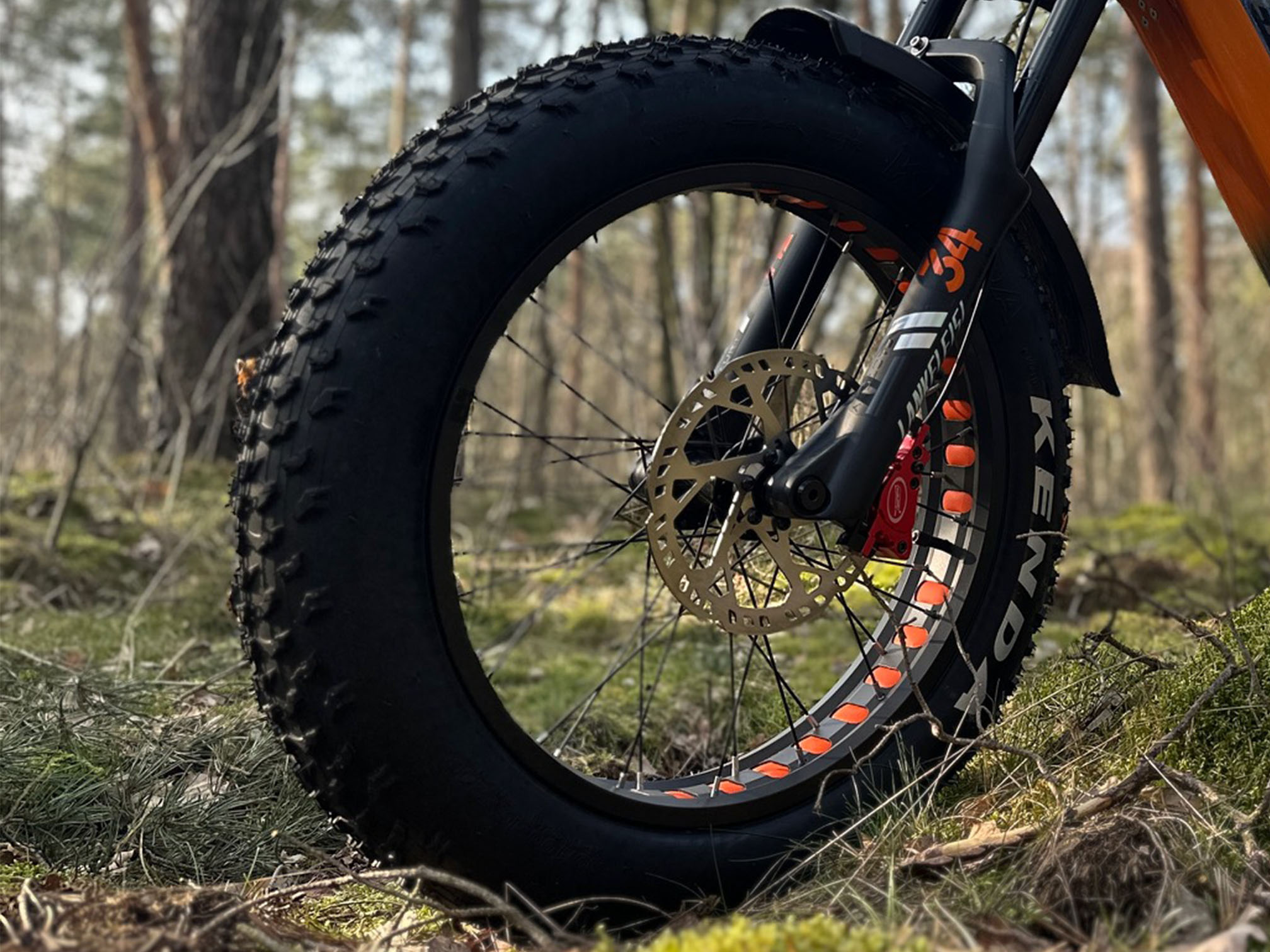Engwe EP-2 Pro vs. Engwe Engine Pro: Which Electric Bike is Better?
As a famous brand for manufacturing quality and cost-effective electric bicycles, Engwe is popular among cyclists and outdoor enthusiasts. In the year 2021, Engwe EP-2 pro and Engwe Engine Pro made into the top 10 list of BuyBestGear’s most hot-selling products. Since a lot of people are wondering about the differences between them, here is an article making a side-by-side comparison between them.
Engwe EP-2 Pro vs Engwe Engine Pro: Specifications Comparison
First of all, the specifications of Engwe EP-2 Pro and Engwe Engine Pro. We can see that Engwe Engine pro is the upgraded version of Engwe EP-2 pro.
|
Picture |
|
|
|
Wheel & tire size |
4” x 20 fat tire |
4” x 20 fat tire |
|
Braking system |
Front & rear Mechanical disc braking |
Front & rear Hydraulic disc braking |
|
Motor power |
750W |
750W |
|
Max. speed |
35km/h |
40km/h |
|
Battery Capacity |
12.8Ah |
12.8Ah |
|
Charging time |
About 6 hours |
About 6 hours |
|
Frame material |
Aluminum Alloy |
Aluminum Alloy |
|
Cruise Distance |
Electric mode: 40km Assistant mode: 80km |
Electric mode: 40km Assistant mode: 80km |
|
Gears |
Shimano 7 gears |
Shimano 8 gears |
|
Shock Absorber |
Lockable front fork mechanical shock absorber |
Lockable front fork hydraulic shock absorber + rear mechanical shock absorber |
|
Weight |
32kg |
37kg |
|
Max load |
150kg |
150kg |
|
Full Size |
167 x 118cm |
167 x 118cm |
|
Folding Size |
76 x 81cm |
76 x 81cm |
|
Saddle Height |
81 - 102cm |
81 - 102cm |
|
Suitable Height |
170 - 200cm |
170 - 200cm |
|
Display |
Single-color LCD Battery level PAS gear Speed Trip distance & time Total distance Error code |
Multi-color LCD Battery level PAS gear Real-time speed Max. speed Average speed Trip distance & time Total distance Error code USB connection Parameter setting |
Engwe EP-2 Pro vs Engwe Engine Pro: Tire
Both of them are fat fire e-bikes.
The tire size of Engwe EP-2 Pro and Engwe Engine Pro are both 20 x 4 inches, that’s why they are suitable for any kind of surface. Having an electric motor on a fat bike increases the fun factor tremendously - you can really explore places you wouldn't have had in the past and with the added boost of the motor you don't have to worry about steep hills anymore. With 750W powerful brushless motor, both Engwe EP-2 Pro and Engwe Engine Pro can climb max. 30 degrees slope. Please note that the climbing ability of an electric bicycle is related to the rider's weight and battery power, so the actual maximum climbing angle may be different.
Thin Tire vs. Fat Tire E-bike: Which is Better?

Engwe EP-2 Pro vs Engwe Engine Pro: Differences in Braking System
Hydraulic Disc Braking vs. Mechanical Disc Braking
Engwe EP-2 Pro uses mechanical disc braking system and Engwe Engine Pro uses hydraulic dis braking system. Both of the systems have the same essential parts but differ in the technology used to make them work.
In the mechanical brake, the force applied to the lever is transferred to one of the pads (not both) through a tensioned brake cable. In the hydraulic brake, the force applied to the lever is transferred to the pistons in the caliper - and from there to the two brake pads - through a fluid (mineral or synthetic oil, depending on the brand of the brake). Due to the pressure exerted by this fluid, the brake pads eventually move to compress the disc and thereby slow the movement of the wheel.
On wet or slippery terrain, hydraulic disc braking system is better.
The reasons are:
- Hydraulic disc brake offers more linear and progressive braking(at least to most). The wheels will not lock suddenly, reducing the risk of a fall and promoting better control and handling of the bike.
- The circuit of a hydraulic disc brake is completely closed and more sealed. On mechanical disc brakes, the cable is exposed at its connection to the caliper. It is therefore more likely that water will come into contact with it, enter the circuit and modify its operation, reducing the braking power.
Hydraulic disc braking system is more durable and easier to maintain.
If your e-bike has a hydraulic disc braking system, you just need to check the system once a year and bleed the circuit, replacing the brake fluid with new one. And the mechanical disc brake requires periodic adjustments to calibrate its power and modulation, by tightening or loosening the cable. Since the pads tend to wear out more quickly, their durability is more limited than that of hydraulic brakes.
Mechanical disc braking is more affordable
A mechanical disc braking system is almost half the price of a hydraulic disc braking system. That’s one of the reasons why Engwe Ep-2 Pro is more affordable than Engwe Engine Pro.

Engwe EP-2 Pro vs Engwe Engine Pro: Differences in Shock Absorbing System
Hydraulic Shock Absorbing vs Mechanical Shock Absorbing
The shock absorbing system is an essential part for mountain e-bikes, they absorb and damp shock impulses to ensure comfortable riding. The difference is mechanical or hydraulic device.
As its name implied, a hydraulic shock absorber works with hydraulic: fluid in the shock absorber is forced to flow through restricted outlets and valve systems, generating hydraulic resistance and absorbing kinetic energy. This is a suspension system commonly used in cars, because it can provide smoother shock absorbing and improve comfort.
Hard Tail vs. Full Suspension
Engwe Engine Pro has a lockable front fork suspension as Engwe EP-2 Pro, the difference is, Engwe EP-2 Pro is a hard-tailed electric bike, and Engwe Engine Pro has a rear suspension.
A hard-tail electric bike is more effective when pedaling, so it will be faster on hills and smooth trails. With no extra suspension system, the weight will be lighter. That’s why Engwe EP-2 Pro is an ideal electric bike for commuting and off-road riding.
A full suspension electric bike can absorb vibration better and it is more comfortable to use than the hard tail mountain bike. If you want to use a bike often on rough and uneven terrain, or if you are an experienced mountain biker, it is better to choose Engwe Engine Pro to ensure comfort, maximum grip and reduce fatigue on the roads.
Engwe EP-2 Pro vs Engwe Engine Pro: Differences in Gears and variable speed
7 gears vs 8 gears
Both Engwe EP-2 Pro and Engwe Engine Pro uses Shimano variable speeds, and Engwe Engine Pro has 1 extra gears. More gears allow riders to have a more refined speed shifting experience, to adapt to climbing, slippery ground and various terrain.
Upgraded motor
Engwe Engine Pro uses a upgraded motor, that’s why when both of them have 750W power motors, Engwe Engine Pro can reach a faster maximum speed. It should be noted here that the maximum speed of an electric bicycle is related to the rider's weight, battery power and terrain, so the maximum speed it can achieve is different under different circumstances.
Engwe EP-2 Pro vs Engwe Engine Pro: Differences in LCD Display
Compare to Engwe EP-2 Pro, Engwe Engine Pro has a more advanced LCD screen, it’s a multi-color screen, and the size is bigger. It is more detailed in speed display, displaying real-time speed, maximum speed and average speed. It also supports the setting of various parameters, such as wheel diameter, speed limit, battery power setting, PAS parameter setting, etc.

Engwe EP-2 Pro vs Engwe Engine Pro: Differences in Backseat
Engwe Engine Pro has a stronger back seat, if you often carry things with your electric, Engwe Engine Pro is a better choice.

Engwe EP-2 Pro vs Engwe Engine Pro: Differences in Weight
Engwe Engine Pro is Heavier
Because Engwe Engine Pro has a hydraulic braking system, full suspension and stronger back seat, it is 5kg heavier than Engwe EP-2 Pro. You may need extra assistance if you want to carry it into your trunk.
In conclusion
Engwe EP-2 Pro is a more cost-effective choice if you ride it for commuting and not-so-intense off-road riding. Engwe Engine Pro is designed to adapt to more complex and diverse pavements and terrains, its hydraulic braking system and full suspension will provide a smoother and more comfortable cycling experience.







































This was extremely helpful Thank You
One thing you fail to mention in this article is the I-ERS (Intelligent Energy Recovery System) regenerative braking feature on the Engine Pro that will charge the battery when in PAS 0 or 1 and traveling over 12mph. It only provides a small amount of regen but when on large downhills, generates a relatively strong braking effect and significantly saves wear and tear on the brake pads.
RECENSIONE OK , MA QUALCUNO PUO’ INDICARMI DOVE POSSO TROVARE UN MANUALE DEL DISPAY IN ITALIANO DELLA ENGINE. GRAZIE
Leave a comment